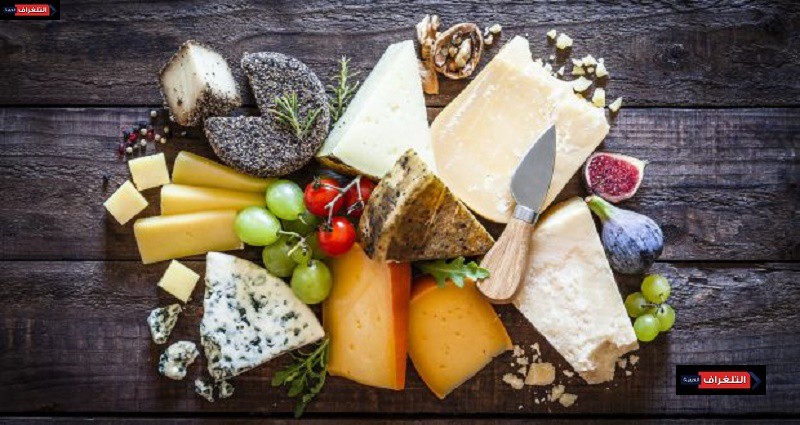How to make the most of your Christmas cheeseboard
Expert tips on what cheese to choose, how to store it and what to serve with it
Irish consumers buy more cheese at Christmas than at any other time of year. There’s barely a fridge in the country this week that won’t have the makings of a substantial cheeseboard stashed away in it. Where and how you buy your Christmas cheese, how you store it, and what you serve with it, can have a huge impact on your enjoyment of it.
Avril Molloy, a former HR and training manager, traded her corporate life for a new career as a cheesemonger in 2019, and now runs The Irish School of Cheese, which provides training for food service staff, restaurants and hotels, and stages promotional events. Molloy says she trained as a cheesemonger “from the farm up”, becoming national retail manager at Sheridans Cheesemongers. She built on her knowledge by training in London with The Guild of Fine Food and Paxton & Whitfield, becoming the first Academy of Cheese training partner in Ireland.
When it comes to deciding what to buy for an interesting and balanced Christmas cheeseboard, Molloy suggests starting with three cheeses: one hard, one with a bloomy rind, and one blue. “For larger parties you can add two more cheeses, including a goat’s cheese, and ask your cheesemonger to recommend something unusual. Alternatively, a large portion of just one cheese can look impressive, or three ages of one cheese, or one milk type, or one country,” she says.
Her favourite cheeseboard would be a mixture of French and Irish produce. “St Tola Ash, made by Sinéad Ní Gháirbhith in Co Clare, is a goat’s cheese rolled in food grade ash, made from burnt vegetables. Paired with light honey, it is delicious.” Her selection would also include “a really good cheddar like Hegarty’s from Cork or Coolattin from Carlow, both cloth-bound cheddars”, along with “a really nice brie-style cheese, maybe Ballylisk of Armagh. It’s a soft brie style and it runs like a brie de meaux.”
Apples and pears go particularly well with Irish hard cheeses. Honey, figs, dates and toasted nuts go well with sheep and goat’s cheeses
Most Christmas cheeseboards will include Stilton, or another blue cheese. For an Irish alternative to Stilton, which Molloy says pairs well with Christmas cake and chocolate brownies, she suggests Young Buck, a raw milk blue made by Mike Thompson in Belfast; Crozier Blue, a sheep’s milk cheese from the makers of Cashel Blue; Wicklow Blue, or Boyne Valley Blue.
What goes on the board with the cheese is important too. Crackers rather than bread, and plenty of variety of them, is Molloy’s choice. “The French always go for bread, but after a big meal, it can be heavy.” She recommends using crackers that are big enough and substantial enough to hold the cheese, without breaking.
Accompaniments can include chutney, honey, nuts and fruit. “Honey and figs go beautifully with blue cheese, and chutney too.” According to Molloy, the type of chutney is important, with fruit-based chutneys which tend to be sweeter than those made with vegetables, best with blue cheese, while the more vinegary vegetable chutneys pair well with a hard cheese such as cheddar. Creamy cheeses go well with fresh berries, and with a brie or camembert she recommends serving onion marmalade.
“Apples and pears go particularly well with Irish hard cheeses. Honey, figs, dates and toasted nuts go well with sheep and goat’s cheeses. Aged balsamic vinegar can be served with manchego, pecorino or Parmesan.” At a recent National Dairy Council event, Molloy paired Cáis na Tíre, a hard sheep’s cheese made in Co Tipperary, with Mella’s Fudge, to stunning, if unexpected, effect.
Buying cheese from a specialist cheesemonger is a good way to ensure that you get a product that has been chosen with care, and stored in optimum conditions. But even if your cheese is sourced from a supermarket, Molloy has tips on how to get the best from it.
She recommends storing it in the vegetable drawer, rather than on a glass shelf in the fridge. “If rewrapping it, don’t use the paper it came in, rewrap it in clean greaseproof paper, and don’t wrap it in tinfoil because the acid in cheese breaks down tinfoil and you’ll get little bits of foil in the cheese.”

Even fancy cheesemonger purchases can benefit from a little care and attention. “Fresh-cut cheese can be bought five days before you need it. After three days, unwrap it to check for moisture or shine. Gently scrape away any shine or moisture with a blunt knife and re-wrap the cheese in greaseproof or parchment paper, or ask your cheesemonger for spare paper when purchasing your cheese.”
Molloy cautions against recycling some cheeses that have been left out of the fridge for long periods of time, at a party, for example. “If soft cheeses have been sitting out on the table for more than four hours, don’t re-use them.” But all cheeses benefit from being removed from the fridge “for at least 45 minutes before serving”.
And what to do with the odds and ends of assorted chunks of cheese that gather in the fridge, post-Christmas? “If it’s hard cheese, which it usually is, I’d melt them down and serve with steamed potatoes, or make tartiflette.” Her method for the ski resort favourite is to “saute off pancetta, or Irish bacon, with onions and garlic and then layer that with sliced parboiled potatoes and cheese and bake in the oven.”
Read also
TRIPLE CHOCOLATE STRAWBERRY VERTICAL LAYER CAKE




